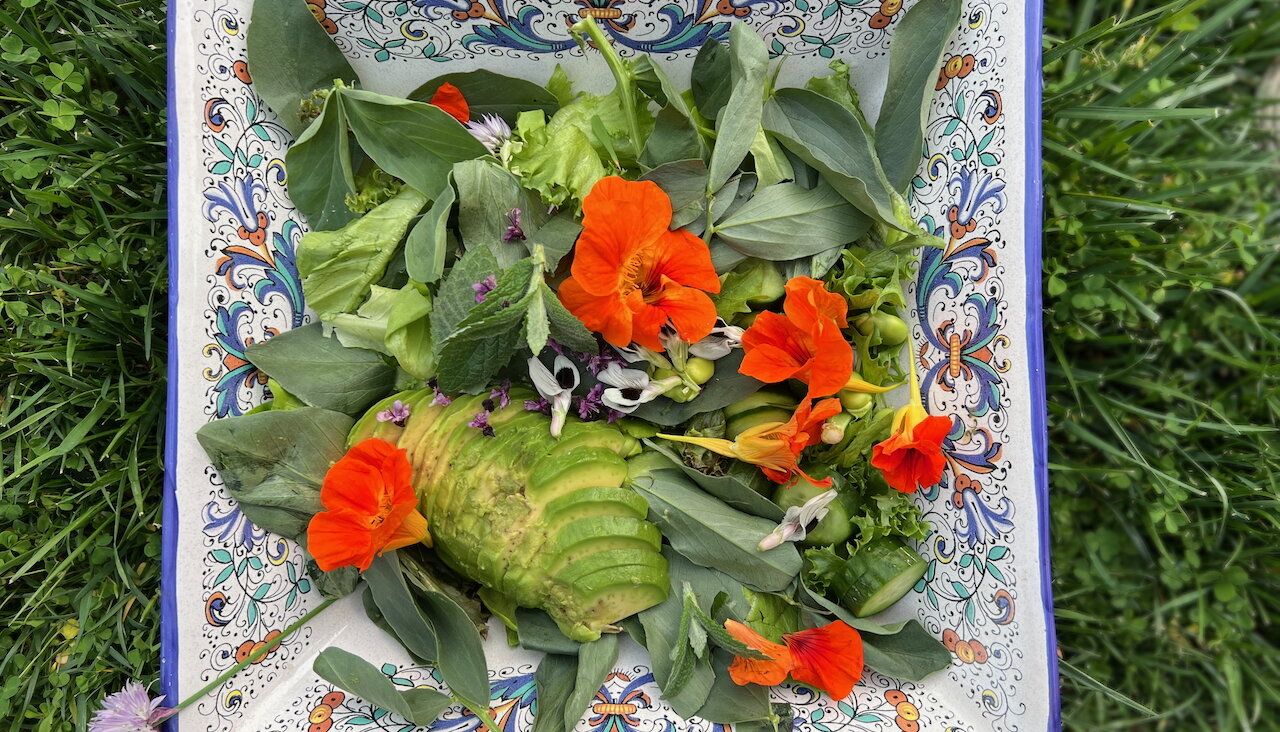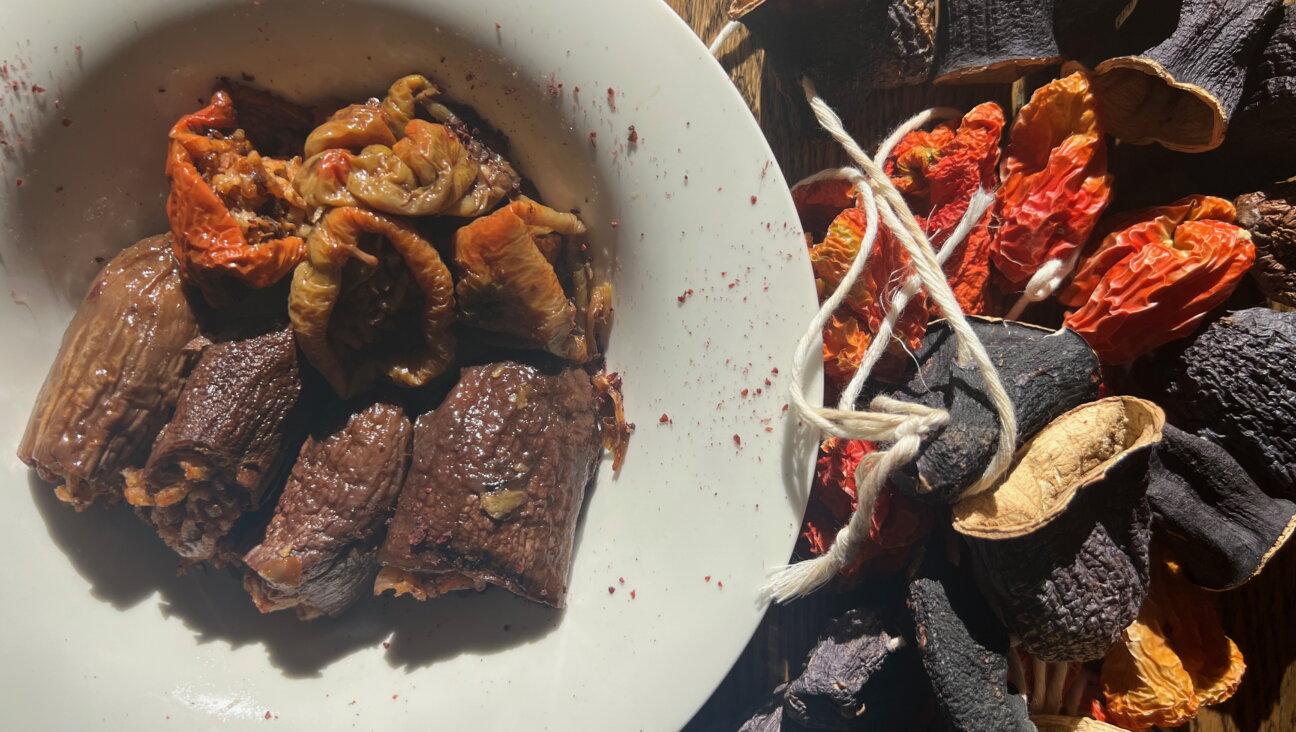Yom Kippur, 50’s Style

The author’s vintage cookbook collection includes “The Jewish Festival Cookbook” from 1954, which provided insights into the mysterious world of Jewish holidays. Photograph by Jon Wunder.
When I say I’m Jewish, I put the emphasis on the “ish.” Yes, I had a bubbe and a zaide; we tossed around words like “oy” and “schmutz”; and we ate foods my friends had never heard of. We had tongue, matzoh brie, borscht, and the requisite Sunday-morning breakfast of bagels with cream cheese, whitefish and lox, all from the Jewish bakery and dairy. (This was long before every Episcopalian was having a bagel with a schmear after church.)
But we never acknowledged any of the holidays, and the synagogue was a place family friends had their weddings. We celebrated birthdays, and prayed at Maple Leaf Gardens for Toronto to win the Stanley Cup.
We were ethnic Jews, pure and simple.
In 1970s Toronto, outward displays of Judaism were confined to specific neighborhoods — ones where I didn’t live. Moving to New York in my late twenties was a bit of a shock. I never knew Judaism could be part of mainstream culture. “Oy” was bandied about by girls from North Dakota, who didn’t know the difference between Jewish and Swedish. The grocery stores sold Manischewitz products all year round.
Living in New York inspired me to learn more about Judaism, and an attempt was made to partake of its traditions and rituals. I started, logically, with the big one, Yom Kippur. My fast lasted about 63 minutes, until my caffeine-deprived body reacted with a headache of such force that I thought I was actually being punished for atoning.
It’s too bad, because I love the idea of Yom Kippur: the reviewing of the year, the cleansing of the body. All of it sounds so good on paper.
Speaking of paper, my quest for knowledge of all things Jewish coincided nicely with my affinity for old cookbooks. So I scanned the shelves of secondhand bookstores hoping to find a title that would serve as my guide to the Jewish kitchens and traditions of yore. And one day, there it was: “The Jewish Festival Cookbook,” by Fannie Engle and Gertrude Blair, published in 1954. This is not just a cookbook: It explains the significance of every holiday, high and not so high, provides full menus for each one and recipes for each dish, and finally, as an added bonus, it offers tips and suggestions on how to be the perfect 1950s Jewish housewife.
Considering how little I knew about being Jewish, I couldn’t help but learn a lot. For instance, while I did know that one would have to dine before the Day of Fasting, I had no idea that there was a traditional ritual meal. I just figured you would stuff up on carbs and cake and call it a day.
But no. According to Engle and Blair, “The meal before the fast is eaten long before sundown on the eve of Yom Kippur. The women of the household have prepared a holiday meal… Dishes served at this meal must be bland, without spices, herbs, or salt, so that they will not induce thirst during the fasting hours.”
In retrospect, almost every meal at my bubbe’s could have been considered a Dinner Before the Fast.
The “Dinner to Break the Fast” is a delightful menu that calls for seasonal ingredients. It’s a meal I like to think I’d actually make. But I also like to think the Leafs will win the Stanley Cup.
Dinner Before the Fast from “The Jewish Festival Cookbook”:
Godene Yoich with Kreplach
Plain Boiled Chicken
Mehren Tzimmes
Green Salad with Bland Dressing
Apple Sauce
Tea
Dinner to Break the Fast from “The Jewish Festival Cookbook”:
Chopped Herring
Chicken Soup
Mondlen
Roast Duck or Chicken
Stuffing
Green Limas
Carrot, Sweet Potato, and Apple Tzimmes
Fruit Compote (Such as Compote of Pears in Wine Sauce)
Sponge Cake
Teiglach
Fresh Fruit
Tea with Lemon
The Forward is free to read, but it isn’t free to produce

I hope you appreciated this article. Before you go, I’d like to ask you to please support the Forward.
Now more than ever, American Jews need independent news they can trust, with reporting driven by truth, not ideology. We serve you, not any ideological agenda.
At a time when other newsrooms are closing or cutting back, the Forward has removed its paywall and invested additional resources to report on the ground from Israel and around the U.S. on the impact of the war, rising antisemitism and polarized discourse.
This is a great time to support independent Jewish journalism you rely on. Make a gift today!
— Rachel Fishman Feddersen, Publisher and CEO
Support our mission to tell the Jewish story fully and fairly.
Most Popular
- 1

Fast Forward Ye debuts ‘Heil Hitler’ music video that includes a sample of a Hitler speech
- 2

Opinion It looks like Israel totally underestimated Trump
- 3

Culture Cardinals are Catholic, not Jewish — so why do they all wear yarmulkes?
- 4

Fast Forward Student suspended for ‘F— the Jews’ video defends himself on antisemitic podcast
In Case You Missed It
-

Fast Forward In first Sunday address, Pope Leo XIV calls for ceasefire in Gaza, release of hostages
-

Fast Forward Huckabee denies rift between Netanyahu and Trump as US actions in Middle East appear to leave out Israel
-

Fast Forward Federal security grants to synagogues are resuming after two-month Trump freeze
-

Fast Forward NY state budget weakens yeshiva oversight in blow to secular education advocates
-
Shop the Forward Store
100% of profits support our journalism
Republish This Story
Please read before republishing
We’re happy to make this story available to republish for free, unless it originated with JTA, Haaretz or another publication (as indicated on the article) and as long as you follow our guidelines.
You must comply with the following:
- Credit the Forward
- Retain our pixel
- Preserve our canonical link in Google search
- Add a noindex tag in Google search
See our full guidelines for more information, and this guide for detail about canonical URLs.
To republish, copy the HTML by clicking on the yellow button to the right; it includes our tracking pixel, all paragraph styles and hyperlinks, the author byline and credit to the Forward. It does not include images; to avoid copyright violations, you must add them manually, following our guidelines. Please email us at [email protected], subject line “republish,” with any questions or to let us know what stories you’re picking up.















